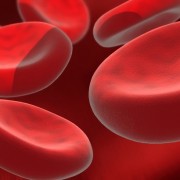Retinitis Pigmentosa: Etiology, Symptoms, Treatment and On-Going Research
Desease
 Retinitis pigmentosa (RP) is a group of several rare inherited conditions characterized by gradual peripheral vision loss and nyctalopia (night vision difficulties) that can potentially lead to central vision loss. RP`s prevalence in general population is 1:3000 to 1:5000.
Retinitis pigmentosa (RP) is a group of several rare inherited conditions characterized by gradual peripheral vision loss and nyctalopia (night vision difficulties) that can potentially lead to central vision loss. RP`s prevalence in general population is 1:3000 to 1:5000.
Some examples of RP and related diseases:
- Usher syndrome
- Bardet-Biedl syndrome
- Leber’s congenital amaurosis (LCA)
- Rod-cone disease
Etiology
The term retinitis pigmentosa is inaccurate, in semantical sense, in that inflammation (inferred by the suffix -itis) is not an important part of this condition`s pathophysiology. RP is essentially a dystrophy or inherent degeneration and not an inflammatory syndrome. Because RP represents a group of several distinctive genetic disorders, the etiology is correspondingly variable.
In a nutshell, there are two main cell sorts within the retina: cones and rods. Cone cells occur throughout the retina, with the central part of the retina (the macula) having the maximum number of cones, and supports color vision and central vision. Rod cells occur everywhere in the retina, excluding the very center (fovea). Rods help with side vision and night vision. In retinitis pigmentosa, the rod cells – and eventually the cone cells – stop working, triggering loss of vision.
Symptoms
Patients are most likely to get a diagnosis of retinitis pigmentosa while still teens or young adults.
The speed of vision change differs from person to person, although vision loss is usually a rather slow process.
- Early retinitis pigmentosa symptoms: loss of night vision, making it harder to see in dimly lit rooms or to drive at night.
- Advanced retinitis pigmentosa symptoms: loss of peripheral (side) vision, ultimately leading to tunnel vision – reminiscent to looking through a straw.
Treatment

While therapies to treat retinitis pigmentosa are limited, ophthalmologists should emphasize the existing treatments to help patients. There are three existing approaches for helping individuals with this condition. The first two approaches help make the most of existing vision by using low vision therapy and vision enhancing devices / implants, respectively. The third method allows to inhibit further vision loss by using antioxidant supplements and vitamins.
Meanwhile, new research is ongoing. Scientists have successfully treated some animals with retinitis pigmentosa. A few treatment trials in humans are undergoing in the US and Europe in 2017-2018. As new therapies are being developed, routine examinations can keep patients up-to-date with clinical trials and potentially vision-saving treatments.
Let is have a closer look at some of the existing approaches to treat RP in greater detail.
Low Vision Therapy
Acetazolamide
Macular edema is known to reduce vision in the advanced stages of retinitis pigmentosa. Of the many treatments attempted, oral acetazolamide has presented the most promising results with some increase in visual function. Recent studies by the RP researchers Fishman and Cox have confirmed improvement in visual acuity with intake of oral acetazolamide for RP patients with macular edema. Adverse effects, including renal stones, fatigue, hand tingling, loss of appetite, as well as anemia, may limit its use.
Lutein/zeaxanthin
Lutein and zeaxanthin represent macular pigments that come from dietary sources exclusively since the body cannot produce them. These substances are believed to guard the macula from oxidative harm, and their oral supplementation has been displayed to boost the macular pigment. Doses of 6-20 mg daily are optional for beneficial effects. Green leafy veggies, as well as other green and yellow vegetables are the best natural food-based sources of lutein and zeaxanthin. Cooked spinach tops the list. Egg yolks are the best non-vegetarian source of lutein and zeaxanthin.
Calcium Channel Blockers
Medicines from the family of calcium channel blockers, such as diltiazem or verapamil, are medicines commonly used in treatment of cardiac disease and hypertension. These medicines have shown certain advantages in some animal models of retinitis pigmentosa, although they have been useless in other models. No clear recommendations exist presently regarding the usage of calcium channel blockers in patients with retinitis pigmentosa.
Valproic Acid
Oral valproic acid, a fatty acid with anticonvulsant characteristics, has shown some benefit for RP patients in small-scale clinical trials, and larger trials are ongoing.
Vision Enhancing Devices and Retinal Implants
It is vital to assist RP patients in maximizing the vision they presently have with refraction and low-vision assessment. Many devices are offered to aid patients with night vision problems, and most low-vision experts are aware of these devices.
A new device designated as Argus II has been recently approved by regulatory authorities for use in adults, and it promises to improve vision. Patients get a retinal implant that has 60 electrodes. They wear special eyeglasses featuring an in-built miniature video camera. That camera captures whatever the patient views, and sends that info to the retinal implant, wirelessly. The electrodes within the implant stimulate the retina, which transfers visual information to the brain, alongside the optic nerve. The outcome: patterns of light are perceived by the patient more clearly. Actually, Argus II allowed retinitis pigmentosa patients to see defined objects with 41.4 per cent accuracy versus just 9.4 per cent without it.
Other surgical management of RP commonly includes cataract extraction.
Investigational procedures with certain potential in managing retinitis pigmentosa may include the following:
- Subretinal gene therapy
- Transplantation of retinal tissue or retinal pigment epithelial tissue
- Surgical incorporation of growth factors
- Placement of phototransducing chip or retinal prosthesis.
Antioxidants and Vitamins
Vitamin A/beta-carotene
 Antioxidants may be beneficial when used to treat patients with retinitis pigmentosa, but no clear evidence in favor of vitamin supplementation has been yet presented. A recent wide-ranging epidemiologic study concluded that high daily doses of vitamin A palmitate (15,000 U/d) can slow down the progression of RP by about 2% per annum. The effects are modest; hence such a treatment must be evaluated against the risk of enduring adverse effects from large doses of vitamin A. It is advisable to have your liver enzymes, as well as vitamin A levels checked annually. Beta-carotene doses of approximately 25,000 IU have been suggested.
Antioxidants may be beneficial when used to treat patients with retinitis pigmentosa, but no clear evidence in favor of vitamin supplementation has been yet presented. A recent wide-ranging epidemiologic study concluded that high daily doses of vitamin A palmitate (15,000 U/d) can slow down the progression of RP by about 2% per annum. The effects are modest; hence such a treatment must be evaluated against the risk of enduring adverse effects from large doses of vitamin A. It is advisable to have your liver enzymes, as well as vitamin A levels checked annually. Beta-carotene doses of approximately 25,000 IU have been suggested.
Docosahexaenoic Acid (DHA)
DHA is an antioxidant and omega-3 polyunsaturated fatty acid. Dietary intake of omega-3 fatty acids may ppotentially slow down the rate of deterioration of visual acuity in retinitis pigmentosa patients, although further clinical tests are required to determine DHA advantage.
Alternative PR Treatments
Other medications
Although bilberry is advocated by some alternative medicine practitioners in doses of 80 mg or higher, no organized studies have been conducted to document the efficacy or safety of bilberry when treating patients with retinitis pigmentosa.
While doses of 1000 mg per day of ascorbic acid have been suggested by some ophthalmologists, there is no evidence confirming the efficacy of ascorbic acid in RP.
In patients with antiretinal antibodies, anecdotal success has been recorded when applying immunosuppressive agents, including steroids.
Stem Cell Therapy
Retinitis pigmentosa is an attainable near term objective for stem cell therapy for a few reasons. The therapeutic methodology pursued by stem cell treatment is to protect the light sensing cells within the eye (cone and rod photoreceptors) by transplanting a variety of stem cell that is known as a retinal progenitor cell (RPC). These RPC cells are capable of protecting photoreceptors against degeneration after their transplantation to the eye. Interestingly, these same cells are also very effective at generating new rod photoreceptors and this gives additional sustained pathway by which RPCs preserve the vital cone photoreceptors. Furthermore, there is evidence that the RPC stem cells themselves may become working photoreceptors and thus stabilize the retina by replacing the dying cells in the patient’s eye. Hence, transplanted stem cells can potentially treat the disease of retinitis pigmentosa in multiple ways concurrently.
Selected biotechnology companies are currently conducting clinical trials of retinal stem cell therapies and are reported to be showing promising progress. In those trials, clinical ophthalmologists are exploring measurements critical to improving the lives of patients with RP ranging from light sensitivity, central visual acuity, peripheral vision, and the ability to see in low light settings. The participants of the trials have their ophthalmic function scrupulously assessed.
Medications with Likely Adverse Effects in RP
Isotretinoin (Accutane)
A remedy used in acne treatment can reportedly worsen night vision, dark adaptation and ERG (electroretinography) response. Since its safety in patients with retinitis pigmentosa is not confirmed, many physicians do not advise their patients to use isotretinoin.
Sildenafil (Viagra)
 A medicine used in treatment of erectile dysfunction has been reported to cause vision changes and reversible ERG. Sildenafil is known as an inhibitor of PDE5, and, in lesser degree, of PDE6. Mutations of the PDE6 gene can cause autosomal recessive retinitis pigmentosa. Thus, clinicians have suggested that sildenafil might not be safe in patients with RP, including those who carry the PDE6B gene mutation. Some patients using sildenafil have suffered blue photopsias, indicating that the drug can reach and affect the retina at a functional level.
A medicine used in treatment of erectile dysfunction has been reported to cause vision changes and reversible ERG. Sildenafil is known as an inhibitor of PDE5, and, in lesser degree, of PDE6. Mutations of the PDE6 gene can cause autosomal recessive retinitis pigmentosa. Thus, clinicians have suggested that sildenafil might not be safe in patients with RP, including those who carry the PDE6B gene mutation. Some patients using sildenafil have suffered blue photopsias, indicating that the drug can reach and affect the retina at a functional level.
New findings, based on one lab research in mice, suggest that sildenafil may cause eye damage to those individuals who merely carry the recessive RP gene (PDE6B) – but are otherwise entirely healthy. Those are people with normal vision who would never develop retinitis pigmentosa. This is a much bigger group of males than the group that have the rare condition of retinitis pigmentosa.
In the lab study, some mice displayed early signs of short-term retinal abnormalities when given a single high dosage of sildenafil. After taking the drug, healthy rodents had “transient” eye problems, while the RP gene-carrying group had those vision problems for much longer. The study infers that males who carry one copy of the RP gene could be more disposed to experience retinal changes because of sildenafil.
Some experts emphasize that results are not verified for humans; the amounts tested on the rodents were 5 times greater than the recommended dose for men; that there was little proof of lasting retinal degeneration. These same experts warn, nevertheless, that men must stop taking sildenafil and get medical assistance immediately if they suddenly develop eyesight problems.
Vitamin E
Some studies have suggested that high amounts of vitamin E (400 U/d) could be modestly detrimental in patients with retinitis pigmentosa. Whereas doses as high as 800 IU/d have been suggested by some doctors, we recommend avoiding higher doses of vitamin E until advanced studies are conducted.










